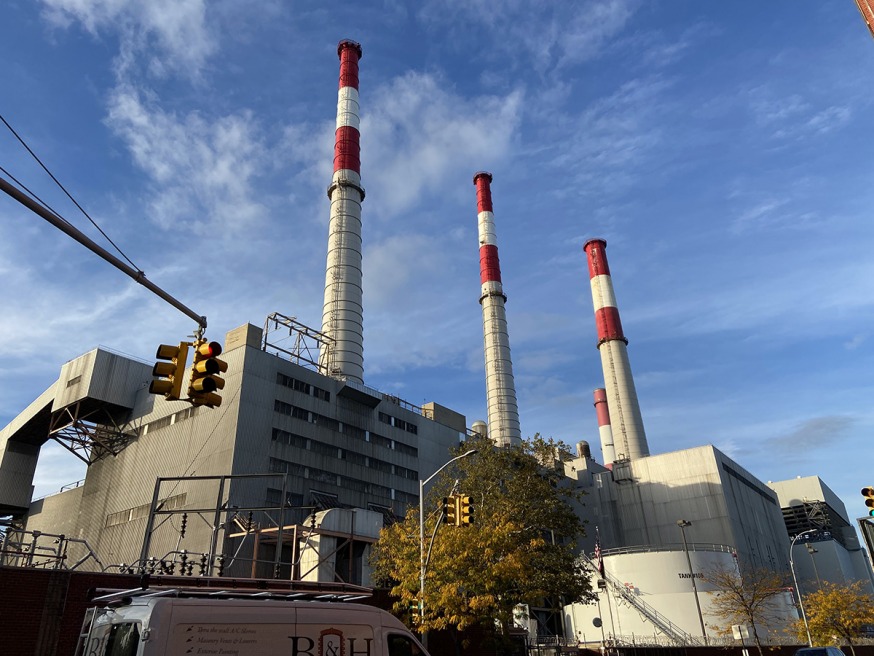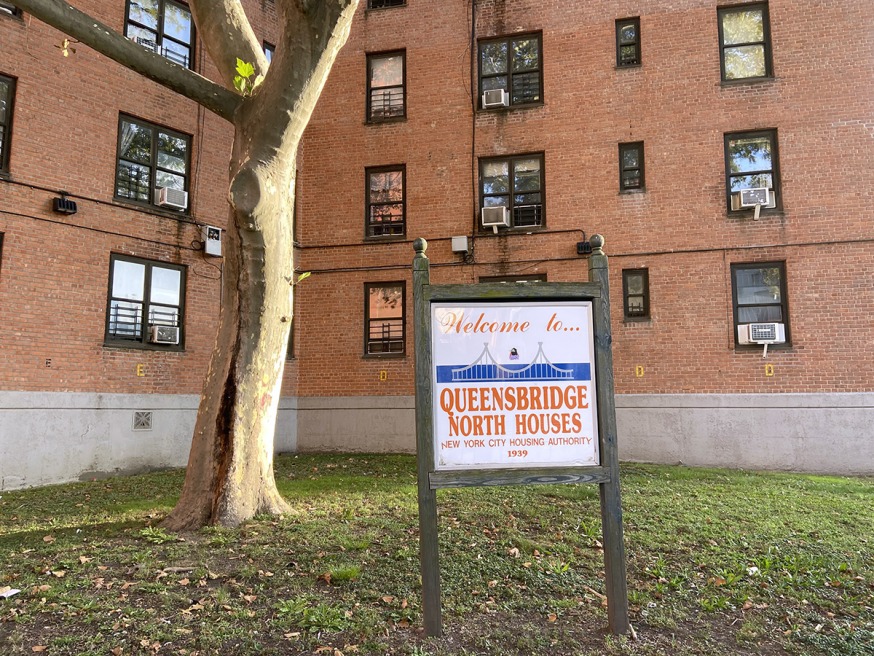
Ravenswood Generating Station (Photo: Ta’Leah Van Sistine)
Oct. 18, 2021 By Ta’Leah Van Sistine
Resident association leaders are “upset” and “disappointed” that a proposal to convert Ravenswood Generating Station into a renewable energy hub was not approved last month by state officials.
“We deserve to have clean air. We deserve to have clean energy,” said Stephanie Chauncey, the PSA 9 police council president for Queensbridge Houses, which is located across the street from the Ravenswood plant and is the largest public housing development in North America.
On Sept. 20, Gov. Kathy Hochul — in partnership with the New York State Energy Research and Development Authority — announced two green infrastructure projects to provide power for New York City via wind, solar and hydropower. Neither of the proposals, however, involved the Ravenswood plant.
Rise Light & Power, the operating company of the Ravenswood Generating Station, submitted a plan in May that involved transferring green energy from upstate New York to the Ravenswood plant via an underwater cable called the Catskills Renewable Connector. Construction on the 115-mile cable was planned to begin in 2023.
NYSERDA, a state public-benefit corporation that focuses on energy efficiency, said the proposals were evaluated through a “competitive process” to ensure selected projects would be the most valuable to New York.
It said that it evaluated “the interests of disadvantaged communities,” as well as “project viability,” in making its selection.
NYSERDA selected the Champlain Hudson Power Express project and the Clean Path NY project. The Champlain Hudson project will deliver green electricity from Canada to the Astoria Energy Complex, while the Clean Path project will send electricity from upstate New York to the Rainey Substation in western Queens.
The public-benefit corporation said that it is only submitting two projects this year to the New York Public Service Commission for regulatory approval. The projects were selected after it sought proposals under its now-closed Tier 4 solicitation, which called for concepts that would reduce the reliance on fossil fuel generation in New York City.
Rise Light & Power, in its proposal, said the CRC would have created more than 5,000 jobs, supplied up to 15 percent of New York City’s electricity needs and, by 2030, lowered CO2 emissions by 10 percent in the state and by 15 percent in New York City.
“We need it so much here,” Carol Wilkins, president of the Ravenswood Residents Association, said about the CRC.
The area around the Ravenswood plant, and western Queens in general, is often called “Asthma Alley” because there are high rates of asthma and other respiratory conditions among residents.
“All of my children have asthma,” Chauncey, of Queensbridge Houses, said. “People are sick all the time and have no knowledge of what’s going on.”
Both Chauncey and Wilkins said they often see soot on car windshields.
“We’re inhaling (that), too,” Wilkins said.

Queensbridge Houses (Photo: Ta’Leah Van Sistine)
Clint Plummer, the CEO of Rise Light & Power, said in a statement to the Queens Post that the company remains committed to a clean energy future and to transforming New York’s energy supply, despite the CRC project not getting approved.
“This decision sets us back but will not deter us,” Plummer said in the statement. “We appreciate the strong support we have within the local community, elected officials and environmental advocates who share our vision of a renewable Ravenswood.”
The proposal got the support of NYCHA residents who submitted a petition with more than 1,000 names.
Resident association leaders also remain optimistic that change will come for their communities.
“We’re going to fight,” Chauncey said about the CRC. “It might not happen in my generation, but I’m fighting for generations to come.”
